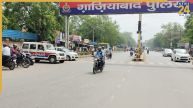To boost connectivity and better commuting, the Delhi Metro Rail Corporation (DMRC) is expanding Delhi’s metro network around 40 kilometer Phase 4.
This forms a significant part of the overall expansion, as nearly 50% of the new metro lines in Phase 4 will be underground. The project will add 27 new underground stations, improving metro connectivity and making travel faster for residents across the city.
A senior DMRC official shared that a 2-kilometer underground stretch from Janakpuri West to Krishna Park, an extension of the Magenta Line, has already been completed.
Phase 4:
The Phase 4 expansion covers 40.109 kilometers of underground corridors out of a total of 86 kilometers being developed across five corridors. These tunnels will pass through busy and crowded areas like Sadar Bazar, Nabi Karim, Mehrauli Badarpur Road, and Ajmal Khan Park, making the construction process quite challenging.
What Is TBM ?
To build the tunnels, DMRC uses two main methods: cut-and-cover technology and Tunnel Boring Machines (TBMs). TBMs are large machines designed to drill through various types of soil and rock. They are especially helpful for underground construction in crowded urban areas, as they cause minimal disruption to the surface. DMRC has been using TBMs since Phase 1, and in Phase 3, around 30 TBMs were used for nearly 50 kilometers of underground work. Currently, seven TBM tunneling projects have been completed in Phase 4, with nine more underway.
Additionally, a small section of the Aerocity-Tughlakabad corridor near Tughlakabad will be built using the New Austrian Tunnelling Method (NATM), which DMRC has successfully used in past projects.
When completed, Phase 4 will enhance Delhi’s metro network, reduce travel time, and provide smoother commuting for millions of residents.













